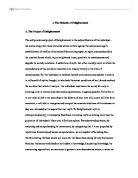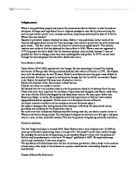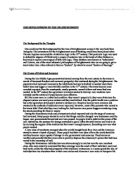This, then, is the context in which American Beauty is located. From its opening moments, when the narrator, Lester Burnham declares that he's forty-two and "in less than a year I'll be dead…. in a way I'm dead already", we know that this is another portrayal of dysfunctional family life. This also quickly demonstrates who the main character and the theme showing he is unhappy with his life and that he seeks some form of enlightenment. Mendes describes this reawakening with deadly accuracy and the gradual disintegration, and premature demise of the anti-hero.
Deconstructing the American Dream becomes a central theme for the film. As Lester achieves a rare moment of tenderness with the brittle, neurotic Carolyn after she has begun her adulterous affair with the loathsome Peter Gallagher, she warns him not to spill beer on the couch. "It's just a couch", Lester exclaims; "this isn't life, it's just stuff", echoing Edward Norton's rant against Ikea in Fight Club (1999). Also the white picket fence along which the eponymous roses grow hides the matching shears and gardening clogs of Lester's wife, Carolyn. This quickly demonstrates the suburban order and apparent need to hold such matching material goods and lends itself to the requirement of Lester to escape this boredom and acquire some meaning to his life. Alongside this his next door neighbours are a homophobic ex-U.S. Marine and his family, the almost-comatose wife who apologises for the way things look when everything is, superficially anyway, perfect and their visionary, drug-dealing son, Ricky have just moved in further forcing Lester’s requirement for enlightenment. Thus, from the moment that Lester (a sedated "whore for the advertising industry", whose central pleasure in life is to masturbate in the shower every day and who wonders when things became so joyless) rebels against the "Lawrence Welk shit" as background to the nightly ritual of dinner, throws up his job while coercing the company into an attractive severance pay-out, takes a job as a burger flipper, buys a 1970 Pontiac Firebird (the same car his cousin bought when young) and buys Grade A dope from Ricky next door, you know he’s going to gain some enlightenment but it's not going to end happily.
Every frame of the first half of the film tells a story of imprisonment and reinforces the sense of entrapment of the characters, all locked in prisons of their own making. Lester is caught in a series of cells: the bedroom, the shower, his office, where even the computer monitor shows a bar chart as if to emphasise his incarceration. The brilliant crimson of the roses against the otherwise muted colour palette only serves to heighten the sense of loneliness that suffuses the film. This loneliness and imprisonment further leads to Lester’s necessity for escape and relative enlightenment. This is eventually achieved at some level for a short time as Lester enters the tunnel of fantasy at the basketball game. This however, does not satisfy his needs but merely tempts him to want more.
Essentially, this is a film about memory and through use of memory Lester finds enlightenment. It resonates through moments when the camera searches out photographs placed around the Burnham house which show the family together in moments of happiness, when Lester's journey back to his past reveals his ability to surprise himself again, when Carolyn responds to her daughter Jane's question about whether this is a "Kodak moment" and exclaims "we lived in a duplex we didn't even have our own house", and the elegiac closing moments when the camera pans over multiple evocations of the same scene and episodes from Lester's past, and he remembers his grandmother's hands and their paper-like skin. In a film so suffused with anger and disillusion it is this sense of rebirth, not only of Spacey but Bentley and Birch too, as the teenagers for whom redemption means escape, that ultimately makes American Beauty the dissection of the pathology of the American Dream gone wrong.
However, in The Matrix Neo seeks enlightenment for a very different reason. He learns that the way in which he had perceived himself was nothing more than "the mental projection of your digital self." The real world, which we associate with what we feel, smell, taste, and see, is simply electrical signals interpreted by your brain. The world, Morpheus explains, exists "now only as part of a neural interactive simulation that we call the matrix." According to The Matrix, the conviction of reality based upon sensory experience, ignorance, and desire keeps humans locked in illusion until they are able to recognise the false nature of reality and relinquish their mistaken sense of identity. This similarly leads Neo to question whether he is making a success of his life and whether there is more out there. Lester asks himself similar questions and reacts very differently in quitting his job and buying a firebird. Neo, however, in the science fiction context realises that enlightenment in his form is through recognition of the fact that he is living in a world which is controlled by robots. He therefore realises that enlightenment lays not only in the recognition of this imaginary world but also his attempts to destroy this world and force enlightenment of the situation upon everyone else. In this way Neo is, initially at least, an unusually passive hero, like Lester, but he is eventually transformed into a mystical "Superman."
In a similar theme as American beauty imprisonment becomes an intricate and vital theme as to the realisation and requirement for enlightenment from both characters. Imprisonment is offered in very different forms as one is suburbia and one is in a world controlled by robots but both have similar themes as they realise they need to break from their current lives and make a conscious effort to do something about it although both will find this very difficult along the way with often violent consequences.
One of the most visually stunning and obvious moment of enlightenment for Neo is in the scene where he goes to visit the oracle and before hand he meets a young boy. The boy is dressed distinctively in a toga of which a monk would typically wear and also with a shaven head also typically of monk descent. This initial vision of the boy offers obviously the idea of a monk and with that the impression of meditation, deep thinking and ultimately enlightenment. This is further backed up by the ensuing conversation in which Neo is told to free his mind in order to have the ability to bend the spoon. This is the first realisation for Neo that he has these superhuman capabilities in this world and the journey of enlightenment that he is about to embark on.
In contrast to American Beauty though The Matrix is the only film which questions the necessity of enlightenment. The Judas of the group helps the agents to track down Morpheous and Neo as he questions enlightenment and realises that “ignorance is bliss.” In this way The Matrix questions the problem with enlightenment as people are ultimately unaffected by the domination of the robots and they will continue through their lives ignorant of the fact that they are living in a dreamworld run by computers. Also if no one questioned this world it would also reduce a massive amount of violence from the crusaders. However, in the way that the character is portrayed as Judas and is recognised as a traitor this in itself realises that fact that enlightenment is the only fair thing to occur as everyone has the right to their own freedom and the ability to do as they wish.
This duality between the matrix and the reality beyond it sets up the ultimate goal of the rebels, which is to free all minds from the matrix and allow humans to live out their lives in the real world. In making this point, the film suggests that enlightenment is achieved through individual effort. As his initial guide, Morpheus makes it clear that Neo cannot depend upon him for enlightenment. Morpheus explains, "no one can be told what the matrix is. You have to see it for yourself." Morpheus tells Neo he must make the final shift in perception entirely on his own. He says: "I’m trying to free your mind, Neo. But I can only show you the door. You’re the one that has to walk through it." The crewmembers of the Nebuchadnezzar epitomize this compassion. Rather than remain outside of the matrix where they are safer, they choose to re-enter it repeatedly as ambassadors of knowledge with the ultimate goal of freeing the minds and eventually also the bodies of those who are trapped within the Matrix’s digital web. The film presents the crew as concerned for those still stuck in the matrix and willing to re-enter the matrix to help them, while simultaneously arguing that final realisation is an individual process.
Neo is loved by Trinity and becomes the One by attaining full consciousness of his surroundings, enabling him to realise his abilities within the Matrix. His perception of his environment as streams of computer code at the end of the film signals the apex of his enlightenment and also the point at which he has absolute mastery of the Matrix, immune to bullets and even death while within it. This demonstrates the idea that the fundamental problem which humanity faces is ignorance and the solution is knowledge or awakening.
Enlightenment is portrayed differently in the matrix and American beauty as in the matrix a physical change occurs in which Neo goes through a process to give his body back self control and the ability to think for himself. This makes the process of enlightenment very obvious to the viewer. The film further depicts how enlightenment is not easy for Neo as he undergoes a number of physical changes which result in him vomiting as well as him having to deal with his change of mental state as a result of his freedom. However, in American Beauty, although it is obvious that Lester had undergone a change it is not so much physical as a mental realisation which is further discovered and explained as the plot unfolds.
Enlightenment is portrayed very differently in both films due to the plots. On one hand the Matrix is a science fiction film set in the future and uses high cost effects to make the action more entertaining. The actual process of enlightenment through freeing Neo’s mind is very visual and as a result obvious. However, although this enlightenment is vital for the plot in the movie it merely uses it as a tool to free Neo and then the plot revolves around him. The only time that enlightenment is used to great extent again is in one of the final sequences when he realises he is the one. However, Lester’s change is far more gradual and as it is not an action thriller enlightenment is portrayed through a number of different mediums such as giving his job up, or smoking some dope. As a result I would say the enlightenment in both films is used to great effect throughout the movie. However, as the matrix is science fiction based in an obviously fictional story line enlightenment is used as a medium to increase the excitement and interest of the film. However, in American Beauty the level of enlightenment is gradual and as it is set in a suburb at a present time it seems to make it far more realistic. The issues it raises are also everyday issues and it could be a true story. This lends more credibility to the process of enlightenment and in this way allows the audience to feel far more in touch with the film and emotions of the characters involved.
Therefore, overall there are some comparisons between the two films as to how enlightenment is represented. However, I would say the most obvious difference is the gradual process of enlightenment in American Beauty in contrast to the obvious and visual portrayal in the Matrix. Both films use a climatic ending to finally recognise that both characters have been enlightened. It does this very strongly in both films but in very different ways. In one through enlightenment the man becomes a super hero whereas in the other through enlightenment the character eventually gets murdered. Therefore in essence as one is given the power to give life through is new found freedom, the others is taken a way as a result of his.
American Beauty and The Matrix both recognise the benefits of enlightenment from the ability of being truthful and honest. It realises the need of being truthful and honest from having to keep up appearances and let things lead to boiling point. American Beauty suggests that enlightenment is key, however, it doesn’t come cheaply and in the violent conclusion Lester is murdered as a result of this. Similarly in the Matrix violence is used as a preventative measure against enlightenment as it is feared that with the realisation of enlightenment and freedom there is no order and thus no control resulting in anarchy.
Filmography
American Beauty, directed by Sam Mendes, 1999.
The Matrix, directed by The Wachowski brothers, 1999.
Fight Club, directed by David Fincher, 1999.
Word Count - 2900







